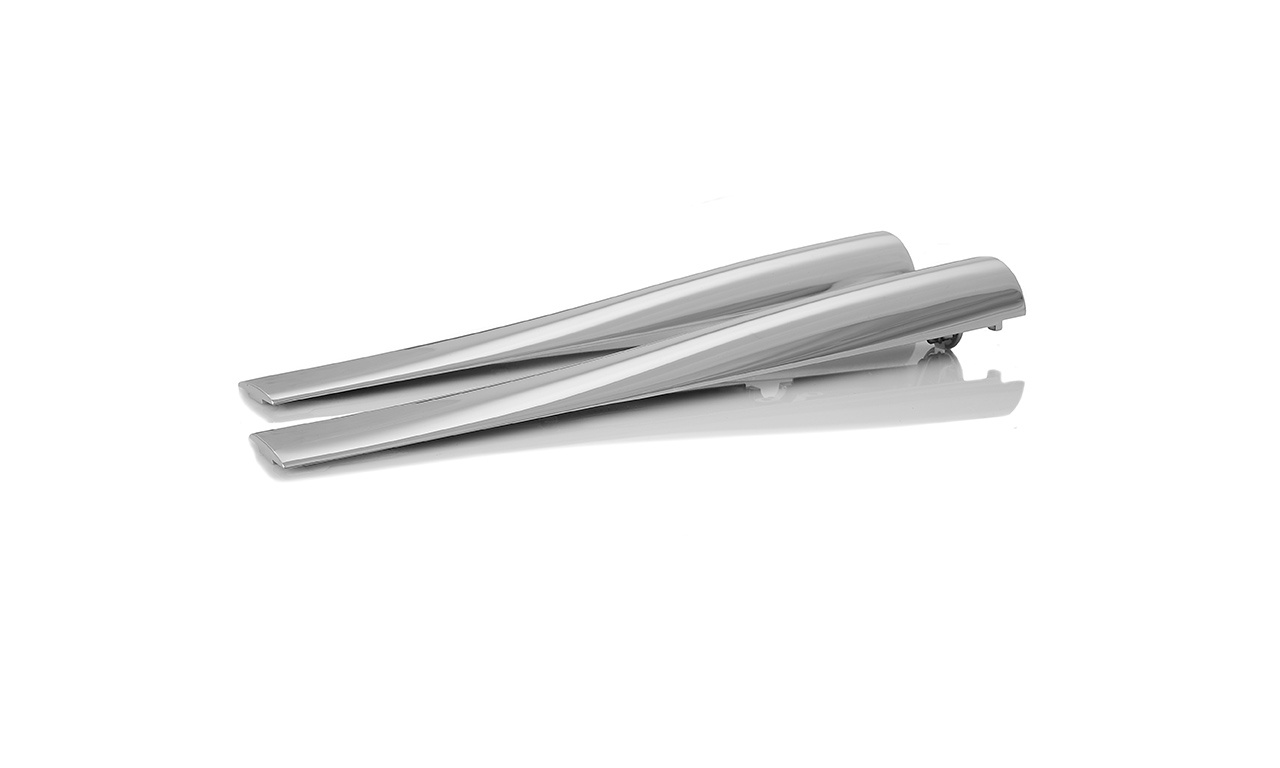As winner of numerous international awards, Bruschi Spa is known for its innovative approach in design and technology. We are glad to share our insights and experiences with the industry members.
Lighting components in zinc alloys: lamps and lights
In this post we are analyzing how the qualities of zinc alloys become important competitive advantages in the production of lighting components. We will then review some products and their characteristics as case studies.
Competitive advantages of lamps and lights in zinc alloys
The lighting market demands specific requirements that Zamak components are perfectly able to meet. Let’s explore some of them:
Employment of zinc alloys with led spotlights and CFLs
In 2005, with 2005/32/EC directive, European Union introduced the gradual substitution of incandescent bulbs and halogen spotlights with products with lower energy impact: such as led spotlights and compact fluorescent lamps (CFLs).
This directive completely changed the situation of the lighting market, allowing producers and designers to adopt new technologies and to expand the range of possibilities: both in the choice of materials and in the design of the products.
One of the consequences of the employment of these new lighting technologies is that zinc alloys have become competitive in comparison to other metals.
In fact, in the past high temperatures reached by lighting systems imposed the realization of articulated heat dispersion systems, which actually limited the employment of Zamak. Now, with the new regulations, it has become possible to employ Zamak for the creation of lamps and lights with innovative shapes and qualities.
Sustainability of the productive process
CFLs and led spotlights allow a saving on the cost of electricity bill because to produce light they employ less energy than other technologies: this means more saving for the final user and more environmental sustainability globally.
Also Zamak, even if in a different way, allows an important energy saving: thus proving to be a winning choice. Melting and manufacturing zinc alloys in fact requires less energy than that required for the treatment of other metals or metal alloys.
In addition, always on the subject of sustainability, at the end of their life cycle zinc products are 100% recyclable.
The productive process of zinc alloys components is less energy consuming compared to others and, together with the lesser energetic expenditure of the lighting system and the recyclability of the products, allows the producer that choses to use these products to make really informed choices. The advantages deriving from the choice of Zamak for components of lamps and lights do not affect only the producer of lighting components but also the final consumer and the environment. The producer will save on the creation of the components, the final consumer will have more choice and saving opportunities, and all of this while respecting the planet and its resources.
Life span of molds
The melting temperature of Zamak, lower than the one of other metals or metal alloys, means a further advantage for the producer of lighting components. In fact with a lower melting temperature of the metal also the wear and corrosion of the mold will be lower.
This means an important advantage in terms of life span of the mold and of decrease in the number of maintenance and repair works necessary to mass production.
Thanks to the choice of Zamak and to the hot chamber die casting process, with which the metal alloys are manufactured, the producer of lighting components will be able to produce large volumes of products over long periods of time in view of an initial investment for the mold that will not incur additional expenses in the medium and long term.
Possibility to create complex shapes with an high degree of detail
Lamps, lights and spotlights are design objects and their shapes are often articulate and complex. Zinc alloys, thanks to their fluidity, allow the creation of the shape desired by the customer directly during the die casting process without the necessity of further mechanical operations.
Over the possibility to create every kind of shape, the fluidity of zinc alloys makes it possible to obtain, already during the die casting process, all those elements that are necessary to the functionality of the product such as treads, holes, plugs and wings for the potential heat dispersion.
Moreover, zinc alloys allow the creation of components with extremely thin walls: this way the employment of raw material is reduced. In the case of lighting products the advantage is not only economic but also functional: lamps and lights with finest shapes can be hang more easily and can be better integrated into the furnishing environment.
Aesthetical factor: superficial treatments
Lastly, also regarding superficial treatments Zamak die casts prove themselves to be competitive compared to products made with other kinds of metals.
Zinc alloy die casts allow low cost mass processing, for example vibration and thermal deburring, with a noticeable advantage regarding also delivery times. In addition, the surface of zinc alloy die casts is ideal for receiving different kinds of treatments such as chroming, gilding, liquid or powder painting. This way products can take on the exterior appearance required by the customer.
In an industry like the lighting one this characteristic of great adaptability is very important because it allows the products to integrate harmoniously with different styles and furnishing environments, allowing a wider catalog and helping designers to wholly express their creativity.
Lighting components: case studies
After analyzing some of the reasons why Zamak components are competitive and particularly indicated for the lighting industry we will now examine some products underlining their characteristics and peculiarities.
Body for recessed spotlights
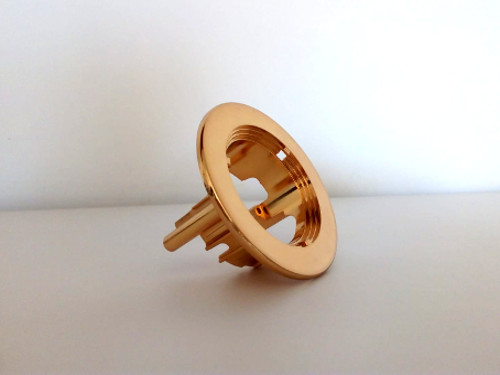
This component, with simple and elegant lines, hosts and frames the spotlight that is to be recessed into the wall. The frame of the spotlight can be round or squared but it can also assume more complex shapes in order to satisfy the design needs of the producer. Furthermore, the variety of superficial treatments, chroming, gliding, liquid or powder painting, as previously mentioned, allows great versatility to the product that can be inserted in different kinds of furnishing environment.
Table lamp: led support
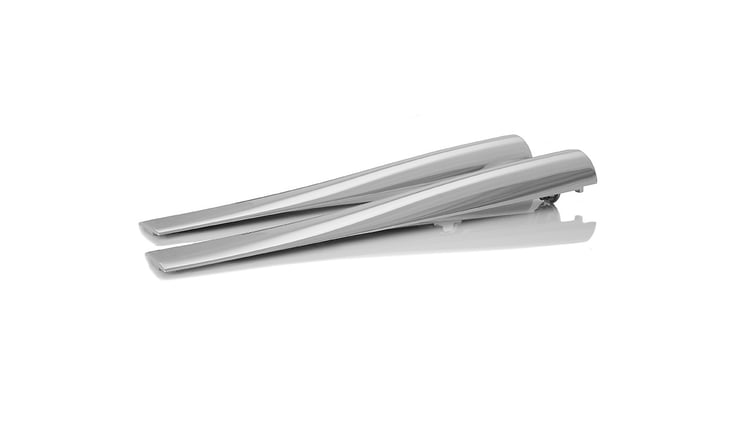
In this case the customer desired a polished product, able to reflect light, characterized by simple and clean lines. Zamak made it possible to obtain, with an extremely limited number of processing, components with the thin walls required by the design of the object and with the smooth and defect-free surface perfect for chroming.
Adjustable spotlight for shops
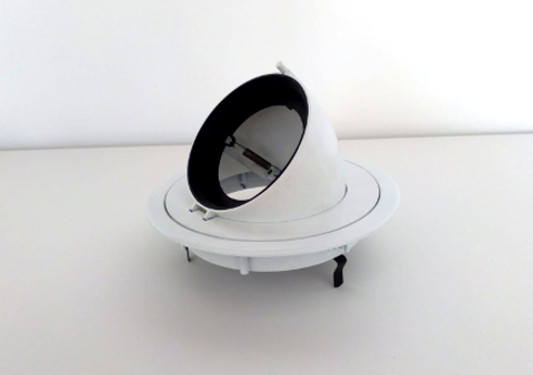
This adjustable spotlight is intended for the lighting of shop windows: where it is necessary to direct light in specific directions. The product consists in two components: the mobile case and the external frame. The frame is the support for the case that, as anticipated, can be regulated to direct the light beam.
For the product in the photography the painting chosen by the customer is a white painting, in this way, in fact, the frame merges with the wall of the shop window without visually interfering with the exposition of the products it lights up.
Ring for cable spotlights
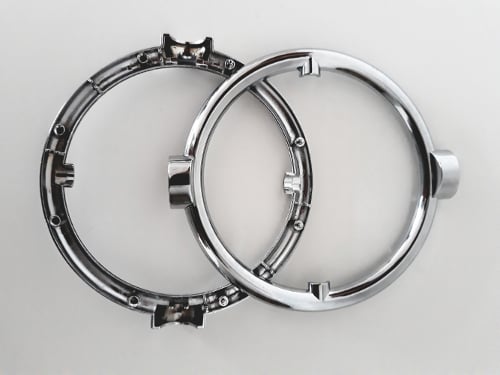
Cable spotlights are ideal for all the environments in which it is necessary to illuminate a room in all its length. The lighting system in fact allows the installation on parallel tracks of the desired number of spotlights and makes it possible to orientate them accordingly to the needs.
This ring for cable spotlight is a product designed for a minimalistic and elegant lighting. Its surface is chromed and it appears smooth, polished, bright and without any slightest defect.
Furthermore, the product is representative of the capability of Zamak to reach extremely thin wall thickness. In fact the die cast has been obtained, directly during casting phase, with all the elements that assure its closure and functionality. In addition, the reduction of wall thickness, with the weight diminution that it implies, results optimal for a cable lighting system.
Case for cable spotlights
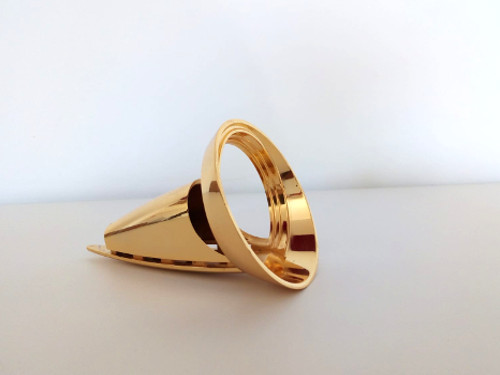
This product is a design item with a particular shape that integrates a heat dispersion system. Also in this case it has been the productive freedom allowed by Zamak to allow the realization of all the details required by the customer in a single component.
In the picture it can be noticed how the surface of zinc alloys die casts allows an optimal result of gliding: also this products stands out for its brightness and for the quality of its surface.
Conclusions
Lighting components made of zinc alloys, whether they are lamps, lights or spotlights, are therefore products able to stand out and to be advantageous from many points of view. From the point of view of creativity and design they allow great design freedom making it possible to create, with a mass production process, products with unique and particular shapes.
Furthermore, Zamak die casts, thanks to the great number of superficial treatments they can undergo, are particularly indicated as components for furnishing products because they are able to integrate with different styles and environments.
Finally, economic and environmental advantages are not to be underestimate: to choose Zamak as raw material and die casting as productive process allows energetic saving and the employment of recyclable and sustainable materials.
